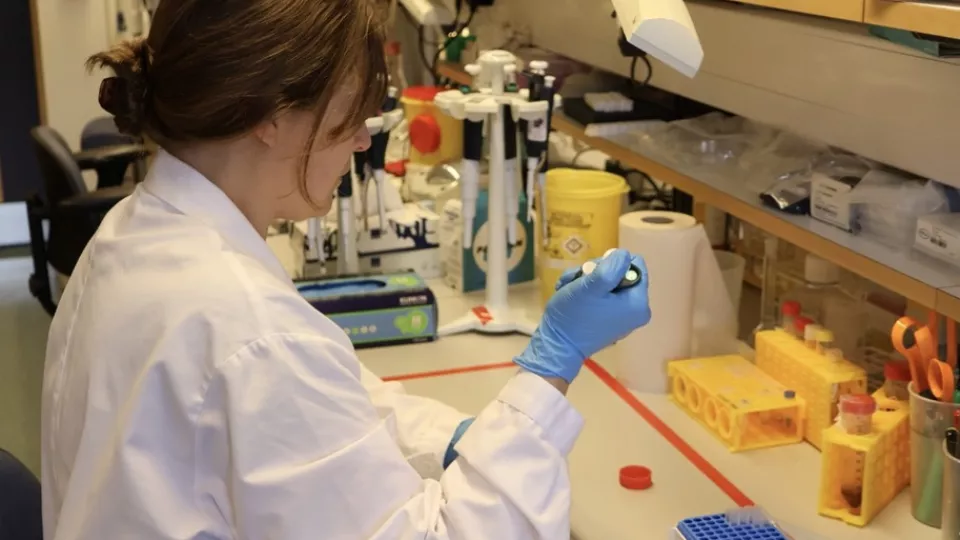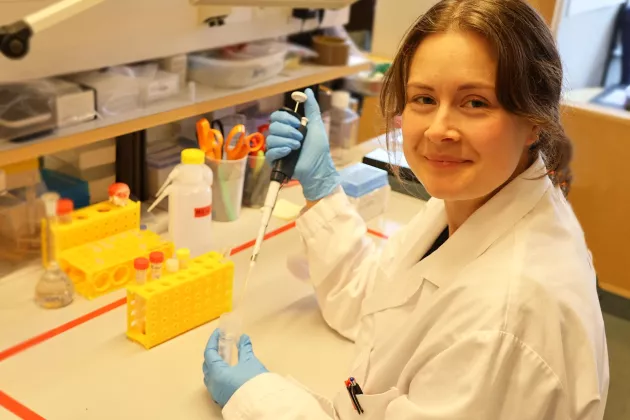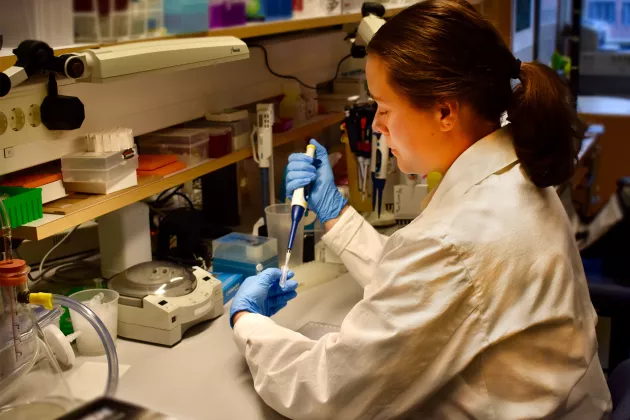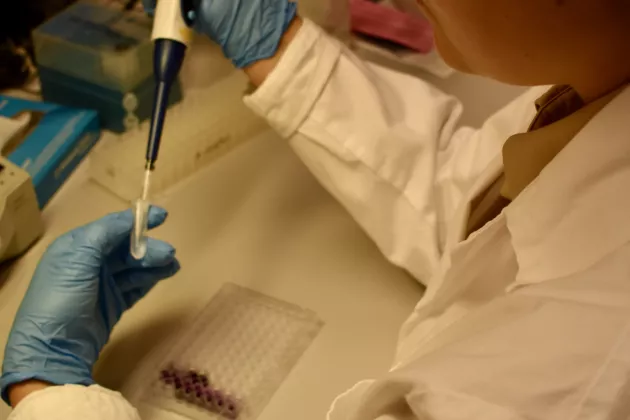Osteoarthritis research can be conducted in many different ways and in many different environments. In the lab where Amanda does part of her research, it is possible to study cartilage from both healthy and osteoarthritis-affected joints.
In the video clip, we get to see when Amanda works with cartilage plugs that measure 6mm in diameter. We see when she secures the cartilage plugs with a liquid, PBS, which is a so-called buffer; water with salt ions. The machine we see Amanda securing the cartilage plugs in is called a Cryostat, which maintains about -20 degrees Celsius, and as a result, the cartilage plugs freeze in place.
In the Cryostat, there is a very sharp blade that enables cutting thin sections, in the video clip, it is set to 20 micrometers. The cuts start from the surface of the cartilage (the joint surface) and then continue downwards.
The reason Amanda does this is because she and her research colleagues want to study two different zones in the cartilage, the superficial zone and the transitional zone. With the help of the thin sections cut in the cryostat, Amanda can collect cartilage from the different zones.
From the sections, Amanda has then extracted proteins from the extracellular matrix (we have previously written more about this here). The material will then be studied using masspectrometry.





